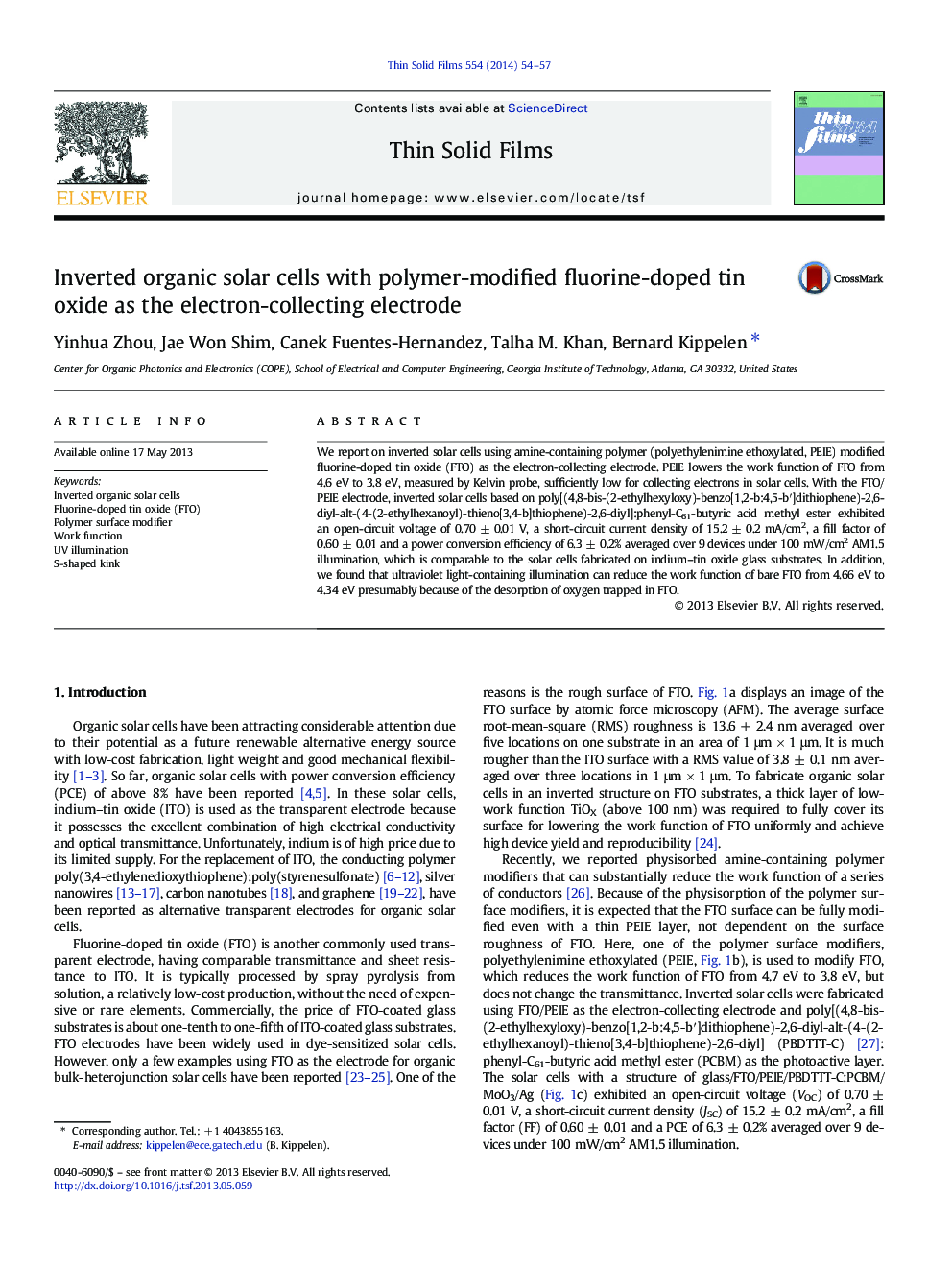| Article ID | Journal | Published Year | Pages | File Type |
|---|---|---|---|---|
| 1665631 | Thin Solid Films | 2014 | 4 Pages |
•Fluorine-doped tin oxide (FTO) is modified by polyethylenimine ethoxylated.•Inverted organic solar cells are fabricated with the modified FTO.•The solar cells exhibit a power conversion efficiency of 6.3%.•Ultraviolet (UV) illumination reduces work function of FTO from 4.66 to 4.34 eV.•UV illumination induces desorption of oxygen trapped in FTO.
We report on inverted solar cells using amine-containing polymer (polyethylenimine ethoxylated, PEIE) modified fluorine-doped tin oxide (FTO) as the electron-collecting electrode. PEIE lowers the work function of FTO from 4.6 eV to 3.8 eV, measured by Kelvin probe, sufficiently low for collecting electrons in solar cells. With the FTO/PEIE electrode, inverted solar cells based on poly[(4,8-bis-(2-ethylhexyloxy)-benzo[1,2-b:4,5-b′]dithiophene)-2,6-diyl-alt-(4-(2-ethylhexanoyl)-thieno[3,4-b]thiophene)-2,6-diyl]:phenyl-C61-butyric acid methyl ester exhibited an open-circuit voltage of 0.70 ± 0.01 V, a short-circuit current density of 15.2 ± 0.2 mA/cm2, a fill factor of 0.60 ± 0.01 and a power conversion efficiency of 6.3 ± 0.2% averaged over 9 devices under 100 mW/cm2 AM1.5 illumination, which is comparable to the solar cells fabricated on indium–tin oxide glass substrates. In addition, we found that ultraviolet light-containing illumination can reduce the work function of bare FTO from 4.66 eV to 4.34 eV presumably because of the desorption of oxygen trapped in FTO.
